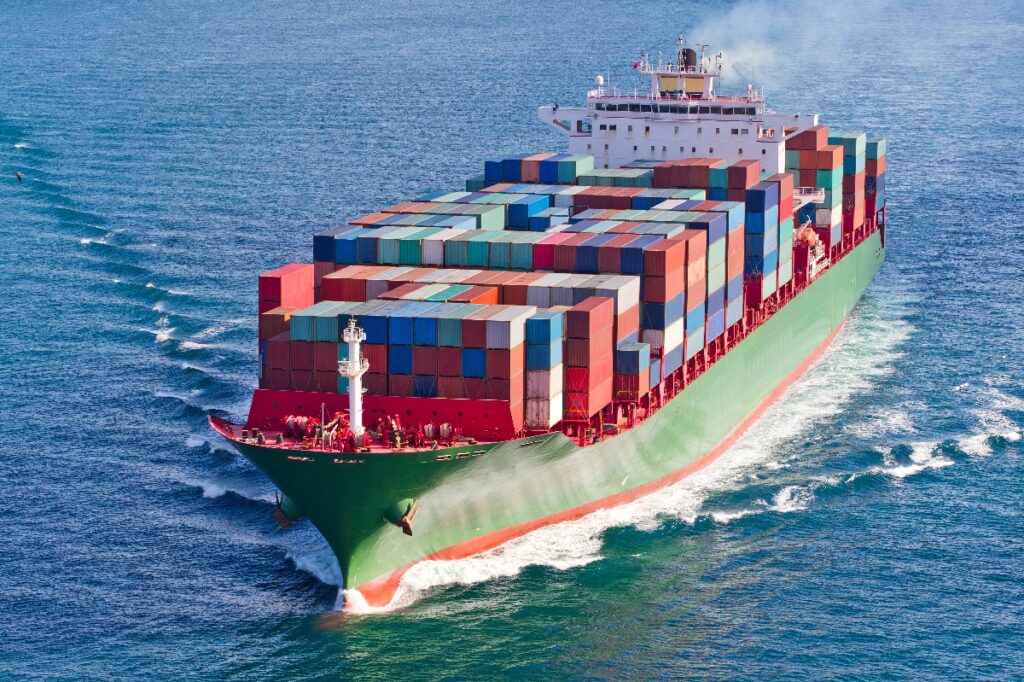Rates, Quotes and Charges for Ocean & Sea Freight Shipping with TopAlpha Ocean Freight

You need to consider ocean freight when you begin shipping large volumes of freight. This is your guide to all things ocean, from choosing which mode is right for you to calculating costs and transit times.
Ocean Freight Meaning: What Is Ocean Freight?
Shipment of goods by sea via shipping containers is known as ocean freight transport.
Importers and exporters most frequently use ocean freight. Over 90% of everything is shipped by ocean freight. (By courier, standard air freight, express air freight) The other modes of international freight transportation are faster, but they are more expensive. Smaller shipments, and items with a high value, are usually shipped in these other modes.
Ocean freight can be slow, but air freight can be expensive. Some freight forwarders offer express shipping in such a case. Although nearly as fast as air freight, this option may be less expensive. We streamline ocean freight processes and only connect with faster services and premium trucking companies.


Why Ship By Sea?
The container holds a whopping 10000 beer bottles! And ocean freight is cheaper. Air freight is too costly for shipments weighing more than 500 kg. The chargeable weight calculator helps you determine whether you will be charged by weight or by volume for light shipments. See our FBX index for live international shipping rates.
Having fewer restrictions International law, national law, carrier organization regulations and individual carrier regulations all play a role in defining and determining what goods are considered dangerous for transport. In general, more air cargo is restricted than ocean freight, including: gases (e. lamp bulbs), all things flammable (e.g. Samsung Galaxy Note 7), or toxic or corrosive items (e.g. batteries), magnetic substances (e.g. In addition to speakers, oxidizers, biochemical products (e.g. chemical medicines), and public health risks (e.g. untanned hides). The Hazardous Material Table has more information.
When compared to air freight, ocean freight emits very little CO2 emissions. This study indicates that 2 tonnes shipped by ocean freight for 5000 kilometers will lead to 150 kg of CO2 emissions, while shipping 2 tonnes by air freight will result in 6605 kg of CO2 emissions.
ocean freight
What Are The Downsides Of Ocean Freight?
There is about a 30x difference in average speed between airplanes and ocean liners; passenger jets travel at 575 mph, while slow-steaming ocean liners move at 16-18 mph. There is no surprise then that a shipment going by air freight from China to the US usually takes at least 20 days longer.
Ocean freight generally takes much longer to deliver than air freight because of port congestion, customs delays, and bad weather conditions. Air freight tracking technology is often more advanced than ocean freight tracking. This means ocean freight has a higher likelihood of getting lost compared to air freight. In particular, this is true when the ocean shipment is less than a container load. As a result of digitization, ocean freight is becoming more reliable.
Protection Ocean freight is more likely to be damaged or destroyed than air freight. Ships are more likely to move since they are in transit for longer. You don't need to worry about ocean cargo falling off ships too much. Rather than 10 thousand containers per year being lost in the drink, it's more like 546 out of 120 million movements in a year. Even less likely is piracy. The Horn of Africa, the Gulf of Guinea, and the Malacca Straits have been hot spots in recent years.
Ocean Freight Services
Ocean and sea freight services are further divided into two categories: full container loads (FCL) and less than container loads (LCLs). LCL involves packing several shipments into one container. This means more work for the forwarder, extra paperwork, as well as organizing the shipments into containers before their main transit and de-consolidating them at the other end. This gives LCL three disadvantages:
The delivery time of an LCL shipment is longer than that of an FCL shipment. A couple of extra weeks is recommended for LCL.
The use of LCL comes with an increased risk of damage, misplacement, and loss.
LCL costs more per cubic meter.
Ocean Freight charges TopAlpha Once your shipment is large enough, and shipping rates are cheaper for FCL, it might be worth sending a full container, even if you don't fill the entire container. The tipping point between LCL and FCL (the smallest sized container is a 20 footer) is somewhere around 15 cubic meters.


Sea Freight Rates per kg
Most LCL shipments are priced by volume of goods, not by weight, with few exceptions.
If selecting the most cost-effective mode is a challenge, consider these general rules of thumb:
Air freight becomes uneconomic for shipments weighing more than 500 kg.
China-US shipments usually take 30-40 days, and ocean freight is around $2-$4 per kilogram.
A shipment between 150 kg and 500 kg from China to the US can be transported economically by air freight and take around 8-10 days.
Express air freight can be faster, but is more expensive.
If the package weight is less than 150 kg, it can be sent by courier (express freight).
These are some of the common ocean and sea freight rates and charges in your freight quote:
On ocean freight quotes and invoices, expect to find these items:
